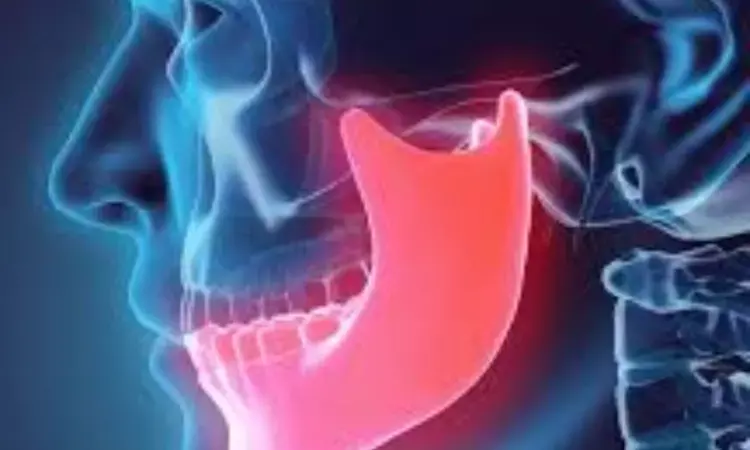- Home
- Medical news & Guidelines
- Anesthesiology
- Cardiology and CTVS
- Critical Care
- Dentistry
- Dermatology
- Diabetes and Endocrinology
- ENT
- Gastroenterology
- Medicine
- Nephrology
- Neurology
- Obstretics-Gynaecology
- Oncology
- Ophthalmology
- Orthopaedics
- Pediatrics-Neonatology
- Psychiatry
- Pulmonology
- Radiology
- Surgery
- Urology
- Laboratory Medicine
- Diet
- Nursing
- Paramedical
- Physiotherapy
- Health news
- Fact Check
- Bone Health Fact Check
- Brain Health Fact Check
- Cancer Related Fact Check
- Child Care Fact Check
- Dental and oral health fact check
- Diabetes and metabolic health fact check
- Diet and Nutrition Fact Check
- Eye and ENT Care Fact Check
- Fitness fact check
- Gut health fact check
- Heart health fact check
- Kidney health fact check
- Medical education fact check
- Men's health fact check
- Respiratory fact check
- Skin and hair care fact check
- Vaccine and Immunization fact check
- Women's health fact check
- AYUSH
- State News
- Andaman and Nicobar Islands
- Andhra Pradesh
- Arunachal Pradesh
- Assam
- Bihar
- Chandigarh
- Chattisgarh
- Dadra and Nagar Haveli
- Daman and Diu
- Delhi
- Goa
- Gujarat
- Haryana
- Himachal Pradesh
- Jammu & Kashmir
- Jharkhand
- Karnataka
- Kerala
- Ladakh
- Lakshadweep
- Madhya Pradesh
- Maharashtra
- Manipur
- Meghalaya
- Mizoram
- Nagaland
- Odisha
- Puducherry
- Punjab
- Rajasthan
- Sikkim
- Tamil Nadu
- Telangana
- Tripura
- Uttar Pradesh
- Uttrakhand
- West Bengal
- Medical Education
- Industry
Clindamycin relevant alternative to other antibiotics in treating osteonecrosis of the jaw: Prospective trial

Germany: In a groundbreaking study, researchers have delved into the intricate relationship between clindamycin concentrations and osteonecrosis of the jaw (ONJ). This prospective trial sheds light on a crucial aspect of medication efficacy in combating this debilitating condition.
The study, published in the Journal of Cranio-Maxillofacial Surgery, revealed clindamycin (CLI) as an appropriate antibiotic option for patients requiring treatment/prophylaxis for ONJ. It could also be used as an alternative to sulbactam/ampicillin in patients allergic to penicillin.
According to the authors, the study is the first to present data on CLI concentrations in both necrotic and vital jawbone tissue.
Osteonecrosis of the jaw is a rare but serious condition characterized by the death of bone tissue in the jaw, often associated with the use of certain medications, particularly those used in cancer treatment. Clindamycin, an antibiotic commonly prescribed to treat bacterial infections, has been implicated in some cases of ONJ. However, the precise relationship between clindamycin concentrations and the development or exacerbation of ONJ has remained unclear until now.
Against the above background, Anton Straub, University Hospital Würzburg, Würzburg, Germany, and colleagues aimed to investigate the jawbone concentration of clindamycin in patients with osteonecrosis of the jaw.
The study included patients with medication-related ONJ (MRONJ) and osteoradionecrosis (ORN) with an antibiotic treatment with CLI. Vital, plasma and necrotic bone samples were collected. Liquid chromatography-tandem mass spectrometry was used to analyze plasma and jawbone samples.
The study led to the following findings:
- Patients with MRONJ exhibited a mean plasma CLI concentration of 9.6 μg/mL and mean concentrations of 2.3 μg/g CLI and 2.1 μg/g CLI in vital and necrotic bone samples, without statistical significance.
- In patients with ORN, the mean concentration in plasma was 12.0 μg/mL, in vital bone 2.1 μg/g, and in necrotic bone 1.7 μg/g.
- Vital and necrotic bone concentrations did not differ significantly.
The findings showed that CLI concentrations are considerably lower than in plasma, but sufficient for most bacteria present in ONJ.
"Within the study limitations, it seems that CLI is a relevant alternative to other antibiotics in treating ONJ because it reaches adequate concentrations in the jawbone," the researchers wrote.
"By using modern bioanalytical methods, some of the limitations identified in previous studies could be circumvented, and thus could provide a more solid statement on the bone penetration properties of CLI," they concluded.
The study findings can revolutionize the management and treatment of ONJ. By elucidating the relationship between clindamycin concentrations and ONJ development or progression, clinicians can better tailor treatment regimens to individual patients, optimizing efficacy while minimizing the risk of adverse effects.
Reference:
Straub, A., Stapf, M., Brands, R. C., Kübler, A. C., Lâm, T., Vollmer, A., Gubik, S., Scherf-Clavel, O., & Hartmann, S. (2024). Investigation of clindamycin concentrations in human plasma and jawbone tissue in patients with osteonecrosis of the jaw: A prospective trial. Journal of Cranio-Maxillofacial Surgery, 52(3), 355-362. https://doi.org/10.1016/j.jcms.2024.01.014
Dr Kamal Kant Kohli-MBBS, DTCD- a chest specialist with more than 30 years of practice and a flair for writing clinical articles, Dr Kamal Kant Kohli joined Medical Dialogues as a Chief Editor of Medical News. Besides writing articles, as an editor, he proofreads and verifies all the medical content published on Medical Dialogues including those coming from journals, studies,medical conferences,guidelines etc. Email: drkohli@medicaldialogues.in. Contact no. 011-43720751


